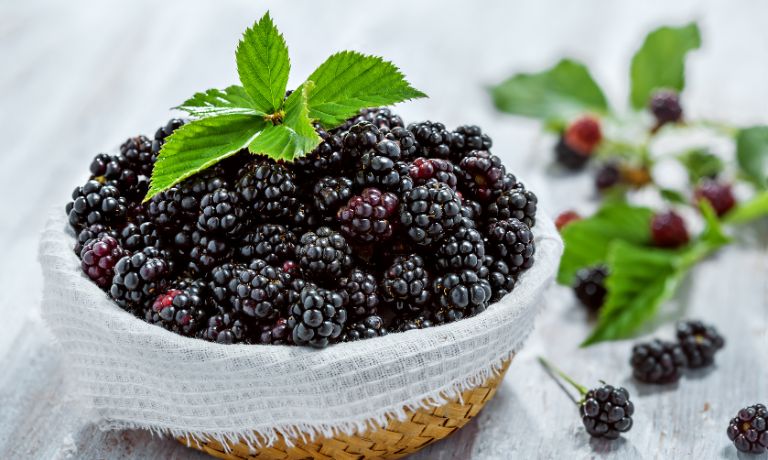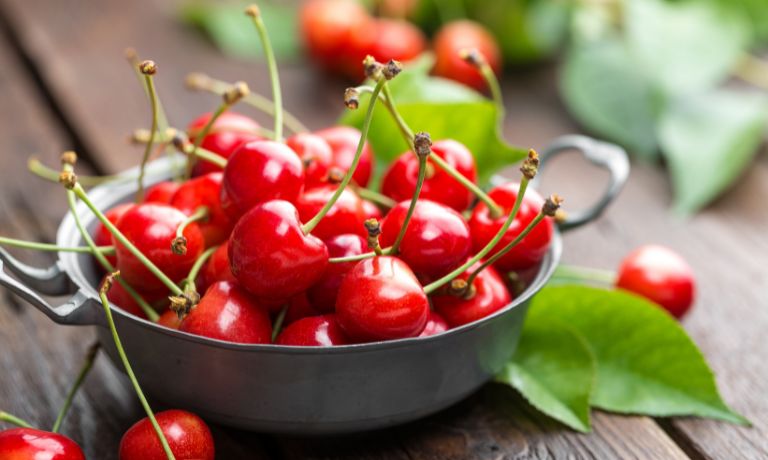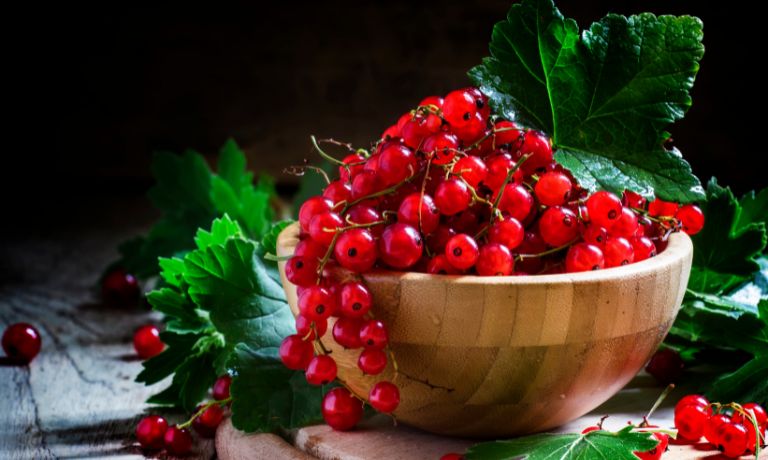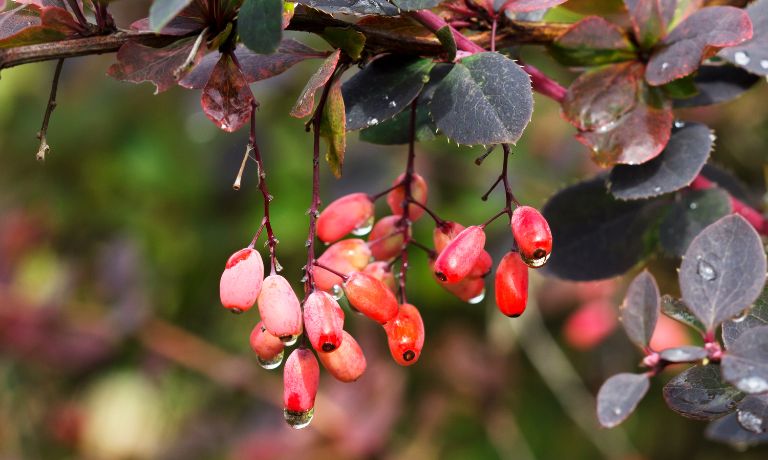Are you looking for a tasty and nutritious substitute for pomegranate seeds? Look no further.
While this exotic fruit’s deep red jewel-like seeds are a favorite ingredient in cuisines worldwide, they are often difficult to find or expensive.
Explore how these helpful substitutes can bring color and flavor into your kitchen–without straining your wallet!
What Are Pomegranate Seeds?
Pomegranate seeds are the edible tiny red-pink arils that encase the white sourish, crunchy pith of pomegranate fruit.
Pomegranate seeds can be eaten raw and cooked, offering a range of nutritional benefits, including antioxidants, potassium, Vitamin C, Vitamin K, folic acid, and dietary fiber.
In cooking, pomegranate seeds can add flavor and texture to various dishes.
They are often sprinkled over salads or desserts for added sweetness and crunch.
Pomegranate juice is also widely used in sauces, marinades, dressings, and other recipes.
The seeds can also be cooked into hearty dishes such as pilafs and soups or used to make jams and jellies.

Substitutes For Pomegranate Seeds
Pomegranate seeds are a great source of antioxidants, vitamins, and minerals, but sometimes they can be hard to find or too expensive.
Luckily, several options to substitute for pomegranate seeds offer similar benefits.
Pomegranate Syrup
Pomegranate syrup is a type of syrup made from the juice of pomegranates.
It has a sweet and tart flavor, similar to fresh fruit, making it an ideal substitute for pomegranate seeds in cooking.
[display-posts id=”2959″ image_size=”thumbnail” posts_per_page=”1″]
Pomegranate syrup can add sweetness and tartness to desserts, breakfast dishes, salads, drinks and sauces.
It can also be used to decorate cakes or tarts.
The syrup is available in regular and sugar-free options, helping people find the perfect option for their dietary needs.
With its unique flavor and versatility, pomegranate syrup can be a great way to add a bit of sweetness to any dish.
Raspberries
Raspberries are a type of berry widely used in sweet and savory dishes.
They have a bright, tart flavor that makes them perfect for adding zing to desserts, salads, and other recipes.
Raspberries also possess many nutritional benefits; they are packed with Vitamin C, antioxidants, dietary fiber, and other essential nutrients.
They are an excellent source of sweetness, adding a tart flavor that complements savory dishes like salads or risottos perfectly.
Additionally, the fiber content of raspberries helps thicken sauces, soups, and other dishes.
Raspberries can also be used as a garnish for desserts or added to smoothies for an extra nutritional boost.
Finally, raspberries make a lovely topping for oatmeal or ice cream when fresh fruit isn’t available.

Blackberries
Blackberries are a type of berry that belongs to the genus Rubus.
They are small and round, usually black in color, with a sweet-tart flavor.
They can be eaten fresh, cooked into jams and jellies, made into pies and desserts, or blended into smoothies.
[display-posts id=”2930″ image_size=”thumbnail” posts_per_page=”1″]
They provide a similar sweet-tart taste and a juicy crunch that can be used to add texture and color to dishes.
Furthermore, blackberries are much easier to prepare than pomegranate seeds since they don’t need removal from the fruit.
When cooking blackberries, remember that their flavor will be slightly different, and they may take less time to cook than pomegranate seeds.
Additionally, blackberries are typically less sweet than pomegranates, so they may require additional sweeteners to balance out the flavor of a dish.

Cranberries
Cranberries are a type of tart red berry native to North America.
They have a sweet and tangy flavor, and their firm texture makes them an ideal ingredient for cooking or baking.
Cranberries contain numerous antioxidants, which can help reduce inflammation in the body and other health benefits.
When cooked, they can make a great substitute for pomegranate seeds, as they have a similar texture and flavor.
They can be used in salads, sauces, smoothies, dressings, and more.
Cranberries are also low in sugar compared to many other fruits, making them an excellent option for those looking to reduce their intake of added sugars.
When using cranberries instead of pomegranate seeds, remember that they are slightly tarter and require extra sugar to balance their flavor.

Blueberries
Blueberries are a small edible fruit native to North America.
They have a sweet-tart flavor, and their color ranges from sky blue to deep purple, depending on the variety.
[display-posts id=”2897″ image_size=”thumbnail” posts_per_page=”1″]
Blueberries are packed with antioxidants, vitamins, and minerals, making them a powerhouse of nutrition.
They can be eaten raw as a snack or added to desserts, smoothies, and other recipes.
They are also naturally sweet, so you don’t need to add as much sugar when making dishes with them.
Additionally, since blueberries are small, they spread easily and evenly throughout a dish, giving it a nice balance of flavor.
Finally, they have the same nutritional benefits as pomegranate seeds, making them an excellent recipe swap.

Cherries
Cherries are small stone fruits that come in many varieties.
They can be sweet or tart and are often used for baking, jams, and other culinary uses.
The flavor of cherries is also milder than that of pomegranate, making them easier to incorporate into recipes.
Cherries can also be used in salads, sauces, and more as an alternative to pomegranate seeds.
Additionally, cherries are generally easier to obtain than pomegranates and are often less expensive.

Red Currants
Red currants are small, tart berries that contain numerous tiny seeds.
They have a sweet-tart flavor and deep red color.
[display-posts id=”2826″ image_size=”thumbnail” posts_per_page=”1″]
They are effective substitutes for pomegranate seeds when added to recipes such as salads, pasta, smoothies, desserts and more.
The strong tartness of the currants is similar to the pomegranate, giving it a similar tangy flavor.
Additionally, the color of red currants is very similar to that of pomegranate seeds and can often be used in place of them aesthetically.
Red currants are also a great source of dietary fiber and vitamins such as vitamin C.
Red currants are available fresh in the summer months and can be found year-round in dried or frozen forms.

Raisins
Raisins are dried grapes with a sweet taste that can be used as a substitution for pomegranate seeds in some recipes.
They can be eaten raw or cooked into dishes to add sweetness and texture.
In addition to being a tasty snack, raisins are a great source of dietary fiber, vitamins, and minerals.
They contain beneficial compounds such as antioxidants that help protect your body from free radical damage.
Raisins also have a low glycemic index, making them a healthy choice for people with diabetes or those trying to maintain blood sugar levels.
They can also be used as a topping for desserts or salads, adding texture and flavor without pomegranate seeds.

Barberries
Barberries are small, tart berries that belong to the genus Berberis.
They have a unique sweet-tart flavor and can be used in sweet and savory dishes.
[display-posts id=”2814″ image_size=”thumbnail” posts_per_page=”1″]
Barberries possess a similar flavor profile to pomegranate seeds but with a slightly more intense sourness.
Their texture can be more fibrous than pomegranate seeds, but they still make a great topping for salads and desserts.
Barberries are also high in antioxidants, which can help to reduce inflammation and boost the immune system.
They’re a great source of dietary fiber, vitamins, and minerals such as iron and magnesium.

FAQs
Do Pomegranates Resemble Corn?
No, pomegranates do not resemble corn.
Pomegranates are round in shape with a thin red skin enclosing hundreds of edible seeds.
Corn is typically yellow or white and has kernels from an ear of corn.
Is A Pomegranate Similar To An Apple?
No, a pomegranate is not similar to an apple.
While both fruits are round and have thin outer skins, the inside of an apple has white flesh with small seeds, while pomegranate has hundreds of edible red seeds.
Do Pomegranate Seeds Have A Cherry Flavor?
No, pomegranate seeds do not have a cherry flavor.
They have a sweet and tart taste unique to the pomegranate fruit.
Pomegranate seeds can be used in many recipes for both sweet and savory dishes.
Conclusion
Pomegranate seeds are a unique and flavorful addition to dishes, but sometimes they can be hard to find or expensive.
Fortunately, plenty of alternatives, such as blueberries, cherries, red currants, raisins and barberries, can substitute for pomegranate seeds.
These ingredients have similar textures and flavor profiles, making them excellent swaps for recipes that call for pomegranate seeds.
Plus, they’re often easier to obtain and more cost effective than buying pomegranates.
So the next time you need some pomegranate seeds in a recipe, consider one of these alternatives!

